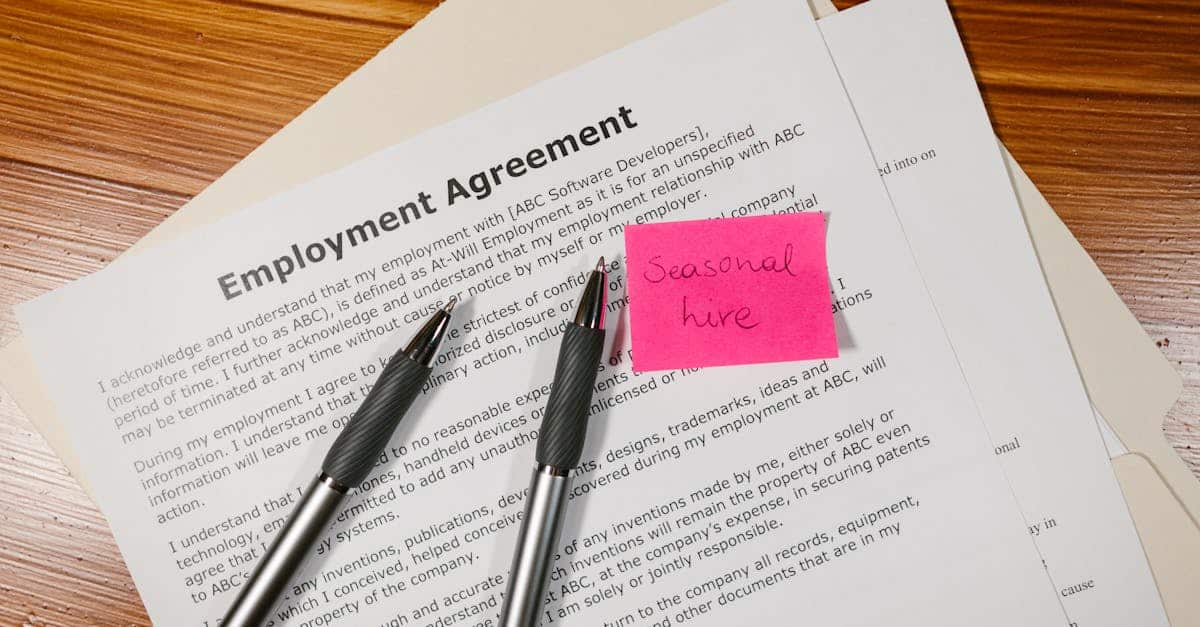
Introduction
HR teams that scale across states face a common, costly headache: hundreds of documents arriving in many formats, slow manual triage that delays hires and accommodations, and a patchwork of retention rules that expose the company to audit risk. An AI document classifier can collapse hours of repetitive sorting into milliseconds of decisioning—speeding routing, enforcing jurisdictional rules, and keeping employee records consistent across your organization.
In this article: we’ll show how to put classification to work for HR—how models are trained for Offer, Onboarding, Accommodation, Performance, and Termination labels; how to map classifier outputs to folders, role‑based approvals, and retention rules in Formtify; plus multi‑state considerations, example workflows, recommended templates, deployment tips, and the metrics you should track to prove value.
Why document classification matters for HR
Speed: An AI document classifier turns manual triage into milliseconds of decisioning. That reduces time-to-action for offers, accommodations, and terminations and frees HR professionals from repetitive sorting tasks.
Compliance: Consistent tagging and routing helps enforce jurisdictional requirements, retention schedules, and audit trails. Using document ai and intelligent document processing reduces human error when applying state-specific rules.
Consistent employee records: Classification ensures every employee file contains the right documents (offer, onboarding, performance, termination) in the same folders across jurisdictions. This consistency is critical for audits, background checks, and cross-state transfers.
Why this matters now
- Faster HR service levels — fewer delayed hires and faster responses to accommodation requests.
- Better risk management — automated labels create reliable, searchable records for compliance teams.
- Scalability — classification provides a repeatable foundation for HRIS integrations and downstream automation.
How classification models are trained for HR docs: labels for offer, onboarding, accommodation, performance, termination
Classification models in document ai are typically trained with supervised labels that reflect HR workflows. The most common labels you’ll use are offer, onboarding, accommodation, performance, and termination.
Training approach:
- Curated training set: Start with representative examples from each label — include different formats (PDF, DOCX, scanned images) and states.
- Annotation consistency: Define clear annotation rules for edge cases (e.g., offer letters that include termination language).
- Feature sources: Use full-text OCR (ai powered ocr solutions), layout cues, and extracted metadata from ai document processing tools.
- Validation: Hold out a test set to measure classification accuracy and false positives for sensitive labels like accommodation or termination.
Tip: incorporate automated document summarization during annotation to speed label review — tools like ai document summarizer or automated document summarization services can help reviewers quickly confirm label correctness.
Designing automated filing and routing rules in Formtify: classifiers → folders → role‑based approvals
Map classifier outputs to folders and workflows. In Formtify, design rules where the classifier label triggers folder placement, metadata tags, and a routing path for approvals.
Typical rule structure
- Classifier: AI document label (e.g., Offer)
- Folder: /HR/Offers/{year}/{state}
- Routing: Hiring manager → HRBP → Legal (role-based approvals)
Practical considerations:
- Use role-based approvals to limit visibility (sensitive accommodation or performance docs go to benefits or HR only).
- Enrich metadata with jurisdictional tags and extracted fields (start date, compensation) using intelligent document processing.
- Include a fallback queue for low-confidence classifications so a human can review before final filing.
- Integrate with HRIS so auto-classified offers can populate candidate records and trigger background checks.
Optionally combine an ai document scanner or ai document scanner app at employee touchpoints to capture documents directly into Formtify and start the classifier pipeline immediately.
Multi‑state considerations: jurisdictional tags, state‑specific addenda, and localized retention policies
When HR operates across states, classification must capture jurisdictional context. Add a required state tag during classification so downstream rules apply the correct legal treatment.
Key elements
- Jurisdictional tags: Attach state and local tags (e.g., CA, TX) to each document to drive contract language, benefits rules, and tax forms.
- State-specific addenda: Use classifier rules to detect and separate state addenda or supplemental forms and associate them with the primary document.
- Localized retention policies: Apply retention rules by tag. For example, some states require longer retention of payroll or termination records — enforce these automatically in Formtify’s retention engine.
Best practice: maintain a configurable policy matrix that maps tags to required retention periods, redaction needs, and approval chains so the classifier+workflow combo enforces compliance consistently.
Example workflows: auto‑classify offer letters to HRIS, route accommodation requests to benefits, archive terminated employee files to retention schedules
Auto-classify offer letters → HRIS
- Capture document (upload or ai document scanner app).
- Classifier labels Offer and extracts key fields (name, start date, salary).
- Trigger: create candidate record or update HRIS using mapped fields; send notification to hiring manager for signature.
Route accommodation requests → Benefits
- Classifier detects Accommodation label and marks document as sensitive.
- Route only to benefits and HR case manager with role-based approvals.
- Store request in a protected folder with jurisdictional tag and retention rules.
Archive terminated employee files → retention schedules
- Classifier marks Termination, extracts termination date, and applies state retention policy.
- Move files to archival storage; set automated deletion or legal hold exceptions per policy.
- Log audit trail of who accessed or approved the archive.
These flows rely on ai document processing for extraction and an ai document management system to enforce routing and retention.
Recommended Formtify templates for HR classification pilots and scale (offers, employment agreements, termination letters)
Start pilots with clear, high-impact templates that cover the most frequent and risky HR documents. Use the Formtify templates below to speed setup and ensure consistent fields for classification and extraction.
- Job Offer Letter: use the offer template to capture structured offer data and map to your HRIS — https://formtify.app/set/job-offer-letter-74g61
- Employment Agreement (Texas example): use this employment agreement to test state-specific addenda and contract clauses — https://formtify.app/set/employment-agreement—texas-4zl9q
- Termination of Employment Letter: include termination date extraction and retention tagging — https://formtify.app/set/termination-of-employment-letter-eyvtl
Notes:
- For proof-of-concept, pair a small labeled dataset with these templates to train classifiers and extraction models.
- If you want low-cost prototyping, try an ai document generator free to create synthetic examples, or an ai document summarizer to compress long docs during review.
Deployment tips: sampling for review, periodic retraining, audit logs and retention enforcement
Sampling for review
Start with a human-in-the-loop approach: route a configurable sample (e.g., 10–20%) of auto-classified documents to reviewers. Increase automation as confidence and accuracy improve.
Periodic retraining
- Schedule retraining based on drift: quarterly retraining is a common cadence, but monitor error rates to adapt.
- Include new document types and state-specific examples to avoid blind spots (e.g., unique addenda or unusual layouts).
Audit logs and retention enforcement
- Maintain immutable audit logs showing classification decisions, manual overrides, and routing steps for compliance reviews.
- Automate retention enforcement: when a document reaches end-of-life, move it to archival or delete per policy, but keep a legal-hold path for disputes.
Use ai document processing tools and intelligent document processing frameworks that surface confidence scores so you can route low-confidence items for review automatically.
Metrics to track: classification accuracy, routing latency, reduction in manual filing time
Classification accuracy
- Track precision, recall, and overall accuracy per label (offers, accommodation, termination). Target >95% for non-sensitive labels and a conservative threshold for sensitive ones.
Routing latency
- Measure time from document ingestion to final assignee. Aim to reduce routing latency to minutes for common workflows.
Reduction in manual filing time
- Measure manual hours before vs after automation. Report percent reduction in manual filing and rework.
Other useful metrics:
- Human override rate (how often reviewers change the classifier label).
- Extraction accuracy for key fields (salary, start date, termination date).
- Number of compliance incidents tied to misclassification.
Regularly review these metrics and tie them to service-level KPIs for HR operations. Improvements in these KPIs demonstrate the tangible value of ai document processing and intelligent document processing investments.
Summary
AI-powered classification turns a mess of formats and manual triage into predictable, auditable workflows that save time and reduce risk. By training focused labels (Offer, Onboarding, Accommodation, Performance, Termination), mapping outputs to folders and role-based approvals, and tagging documents by jurisdiction, HR and legal teams can enforce retention, speed routing, and keep employee records consistent across states. An AI document classifier combined with extraction and retention rules gives you repeatable automation, clearer audit trails, and faster service levels—while human review and periodic retraining keep accuracy high. Ready to pilot this in your organization? Try it in Formtify: https://formtify.app
FAQs
What is an AI document?
An AI document is a digital file processed with algorithms that can read, classify, and extract information automatically. Rather than relying on manual review, AI techniques (OCR, NLP, and classification models) identify document types and pull structured fields for downstream systems.
How does AI document processing work?
AI document processing typically captures a document (upload or scan), runs OCR to get text, then applies classification and extraction models to tag the document and pull key fields. Those outputs feed routing rules, HRIS updates, retention engines, and human review queues when confidence is low.
Can AI summarize long documents?
Yes — document summarization uses NLP models to surface key points, clauses, or action items so reviewers can validate faster. Summaries speed annotation and review, especially during training and when dealing with long employment agreements or addenda.
Is AI document processing secure?
Security depends on implementation: strong vendors encrypt data at rest and in transit, enforce role-based access controls, and maintain immutable audit logs for compliance. Always evaluate vendor security certifications, data residency, and legal‑hold capabilities when handling sensitive HR records.
Which industries use AI document solutions?
AI document tools are widely used in HR, legal, finance, healthcare, insurance, real estate, and government for contract management, claims processing, onboarding, and retention. Any organization with repetitive document workflows and compliance needs can benefit from automation.





